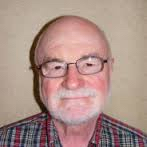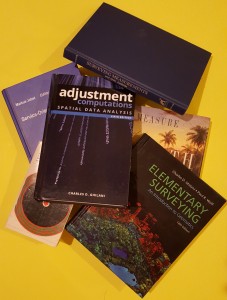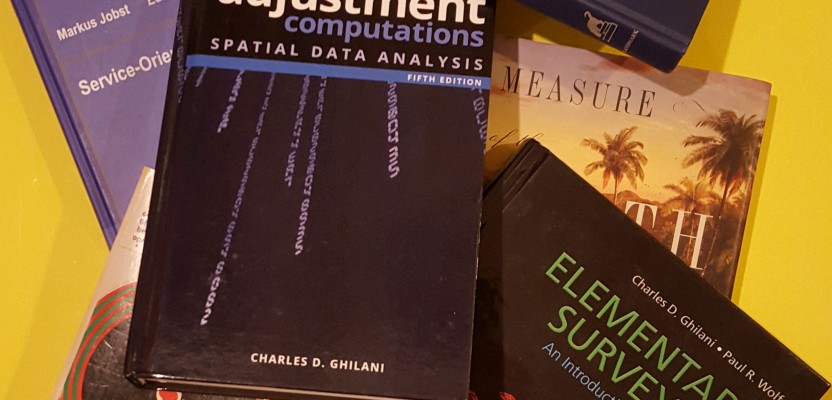A conversation with Muried Alvin (Al) Pepling, PLS
From FN editor Scott P. Martin:Al’s advice and insight contains much wisdom that can be applied to almost any professional career, but especially ours. Reading this caused me to recollect on writing “What is a Professional Land Surveyor?” and “Mentoring: A Two Way Street.” To succeed, excel, and thrive in this profession, one must work to increase the breadth and depth of knowledge and experience and strive to never stop learning.
“The young surveyor needs to be educated,” says Al Pepling, a respected western Pennsylvania surveyor (with five decades of experience). As Al notes, education takes on many forms—and so does (or should) the surveying profession.
 You might recognize Al’s name; he authored many helpful product reviews in surveying publications over the years. When xyHt launched several years ago, Al called to say he felt we were taking the right approach in promoting a more encompassing view of surveying.
You might recognize Al’s name; he authored many helpful product reviews in surveying publications over the years. When xyHt launched several years ago, Al called to say he felt we were taking the right approach in promoting a more encompassing view of surveying.
I had always wanted to meet Al, and while passing through PA recently I got to sit down with him and ask him what advice he has for young surveyors—and for the profession.
“[For example,] go to Scotland,” said Al. “You have surveyors that do nothing but measure the inside of buildings, and others who do other types of surveying, and unfortunately the American surveyor is thinking of land surveys only. There is construction surveying, etc. Land surveying will kind of narrow into boundary surveying when we should be encompassing.”
Al reflected on a conversation about the issue of this narrowing scope from his days studying with Thomas McGrath (surveying author, educator, and mentor). “Thomas told me that if surveyors did not expand and wise up, they were going to give up their birthright to people running around with little black boxes. And now the little black boxes are smart phones, and there are people running around doing things that would normally be the surveyor’s provenance.” Al added, “Surveyors should adapt and expand their knowledge and get into [things like] remote sensing; they should be getting into the GIS more heavily—so that it is done properly!”
This missed boat of geographic information systems is a sore subject for Al as he feels the boat was ours in the first place. “Just look at … the GIS people [who] have taken over the surveyor’s [role] of making maps, and of cartographers. GIS people are looked upon [as doing those roles], even though they don’t have the accuracy of a surveyor or are aware of it. Best combination: when I was president of the NJSPLS [New Jersey Society of Professional Land Surveyors], I tried to get people interested in GIS and cartography because I could see that was an area that was going to grow and something surveyors have in their history and their background.”
To develop young surveyors to be prepared for this more encompassing model of the profession, Al sees that education has to be just as encompassing, and all forms of education: formal and informal. Al, who has formal education as well as decades of diverse experience, does emphasize experience, but in conjunction with mentoring and disciplined self-learning.
“Not all paths are reached in the same way. Experience is one way—informal. Formal is going through a school. You can learn [a lot] on your own.” But he cautions, “The problem with experience: Do you have 20 years’ experience or do you have 1 year multiplied 20 times? And [it will be] only as good as the teacher. You [also] go to formal, or read varying books.”
 The value of learning from books was instilled in Al by his instructor and friend Thomas McGrath. “Tom’s example of my lack of knowledge [was made clear] one Saturday when I came into the school and saw several books on land surveying—different facets —on his desk. I asked, Why do you have to [read those]? You know everything you need to know—you are teaching it! He said to me quite succinctly that every book is like talking to a different person who has a different way of looking at things, like a facet on a diamond. He said … that you get to interact by reading; hence with the authors of a book, you are having a conversation with a different expert.” Al added the key takeaway from this anecdote: “The upshot of all that is: you are going to learn, and you are perhaps going to think about things differently than you did before. [That’s a] good thing as it is going to expand your knowledge of a subject.”
The value of learning from books was instilled in Al by his instructor and friend Thomas McGrath. “Tom’s example of my lack of knowledge [was made clear] one Saturday when I came into the school and saw several books on land surveying—different facets —on his desk. I asked, Why do you have to [read those]? You know everything you need to know—you are teaching it! He said to me quite succinctly that every book is like talking to a different person who has a different way of looking at things, like a facet on a diamond. He said … that you get to interact by reading; hence with the authors of a book, you are having a conversation with a different expert.” Al added the key takeaway from this anecdote: “The upshot of all that is: you are going to learn, and you are perhaps going to think about things differently than you did before. [That’s a] good thing as it is going to expand your knowledge of a subject.”
Al expounded on this theme of encompassing multiple forms of education and disciplines within surveying: “Mentorship should be a group, not one person.” I joked about the example of the clusters of survey markers as illustrating how much surveyors can disagree with each other; which one would make the best single mentor? Better to have many. “Young surveyors should diversify,” said Al. “You’ve got to survive; you are in surveying to survive, and being ready to do [many types of work] is important.”
In putting terminology into context, Al said, “I have no problem at all with “geometrician,” with the term “geomatics”; it is “geo,” the Earth, and “matics,” what we do: geomatics engineering, etc. The thing that sets apart the person doing land surveying: they know [not only] the math, but the law.”
To garner the right knowledge and experience to be a surveyor, Al advises a combination of all paths. “Knowledgeable people need a varied education and knowledge, and local [knowledge as well]. It should take a four-year degree, easily, and more. For the [people] who cannot afford or have time for a four-year degree, you can have self-learning.” We talked at length about ideas for mentoring (strictly verified mentoring), self-paced study, remote learning, and how to incentivize and formalize mentoring.
On advice for young people considering entering the profession, he said, “Another question to ask is, Do you want to be an assembly line worker doing the same thing every time? Do you want varied [work]? What I like about surveying is that you are going to be confronted with something new. Every time you go out and look at the land, you are going to understand it is not going to be by rote—you are not going to put the same round thing in the same round hole. You are going to learn more as you go along.”
After our meeting, I reflected that I wish I’d had the opportunity to work with Al, study with Thomas, and have more time to read more books. I ordered several, shortly afterward. Let’s hope we hear more from Al in the near future, as well.

